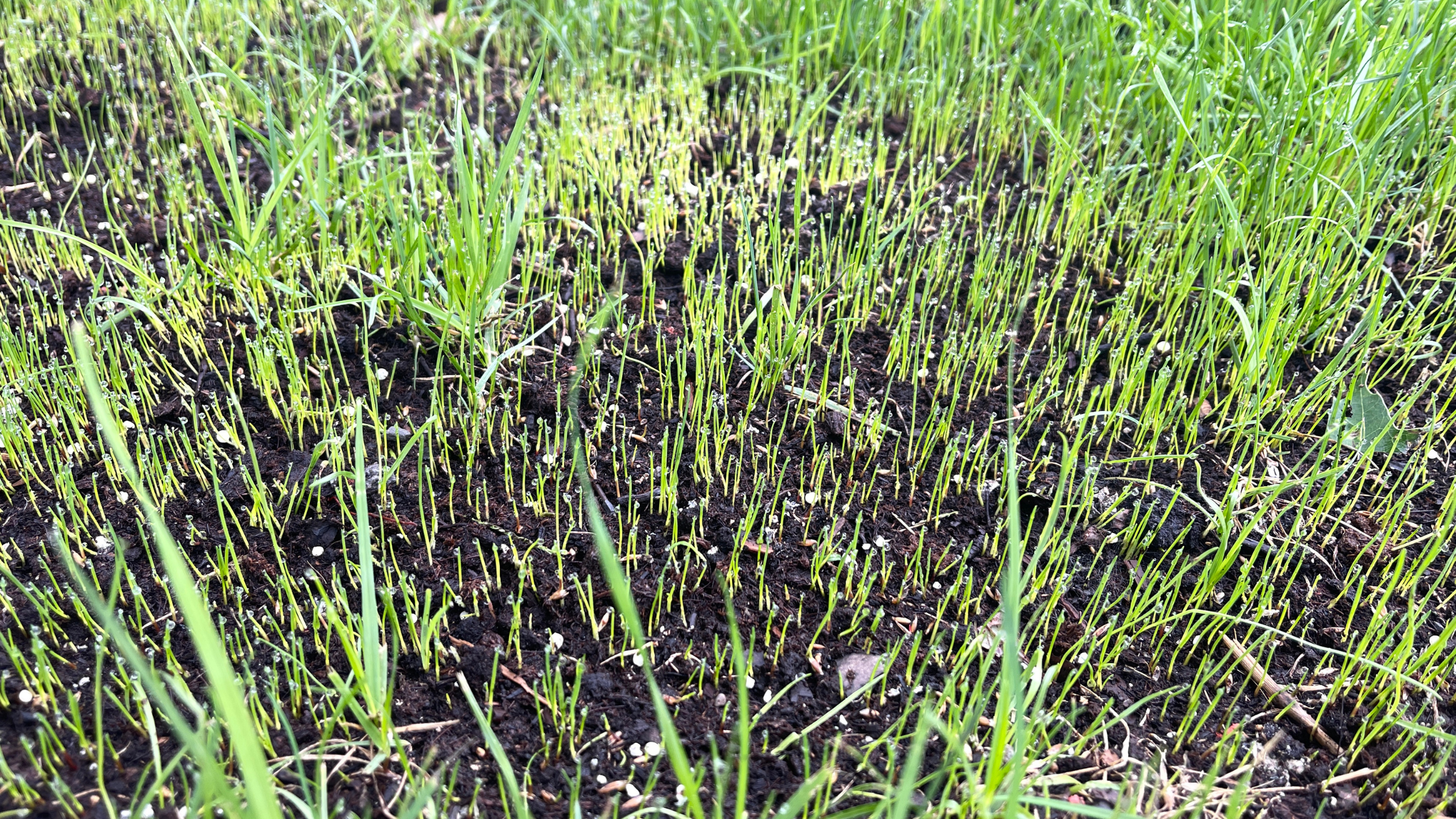Seeding your lawn is a crucial step in achieving a thicker lawn, but the work doesn't stop once the seeds are in the ground. Proper aftercare is essential to ensure that your grass seeds germinate, grow strong, and thrive. Follow these step-by-step instructions to give your newly seeded lawn the best start possible.
What should I expect?
- If your lawn was aerated & overseeded, plugs of soil will be visible from the cores that were pulled during the aeration. These will break down in a week or two. While seed may be visible on the ground, it will also be planted in the holes.

Holes created by aeration & overseeding + close up of plugs in a heavy thatch area - If your lawn was slice seeded, you’ll notice slits especially in bare areas. While seed may be visible on the ground, it will also be planted in the slits.

First passes with a slice seeder (left) & resulting diamond pattern germinating (right) - Regardless of method, seeds will typically germinate in 1-2 weeks. Mainely Grass uses a Northeast seed blend tailored to New England lawns.
How should I be watering?
- Watering is an essential and critical part of a successful seeding. Along with seed-to-soil contact, moisture is needed for seeds to germinate.
- For the 3-4 weeks after seeding, you should plan to lightly water your lawn 2-4 times a day for around 5-10 minutes each time. It is important to keep the seed moist but not overly saturated. Adjust these recommendations based on your observations.
- When the seedlings reach two inches in height, gradually start to reduce the frequency of watering and return to normal watering practices.

Seeds germinating from a properly watered lawn with moist soil
How should I be mowing?
- You should wait to mow until your new grass has reached the height you'd normally mow the lawn. This ensures the turf can withstand the stress of its first cut.
- Make sure your mower blades are sharp! Dull blades can injure turf.
- Seeded areas should be kept free of foot traffic from people and pets ideally until it has been mowed two times.

An example of a seeded lawn that is not ready to be mowed yet (left) compared to an example of a seeded lawn ready to be mowed (right)
By following these step-by-step aftercare instructions, you’ll give your newly seeded lawn the best chance to thrive. With patience, consistency, and the right care, your lawn will reward you with a thick, healthy, and beautiful green space for you to enjoy.
